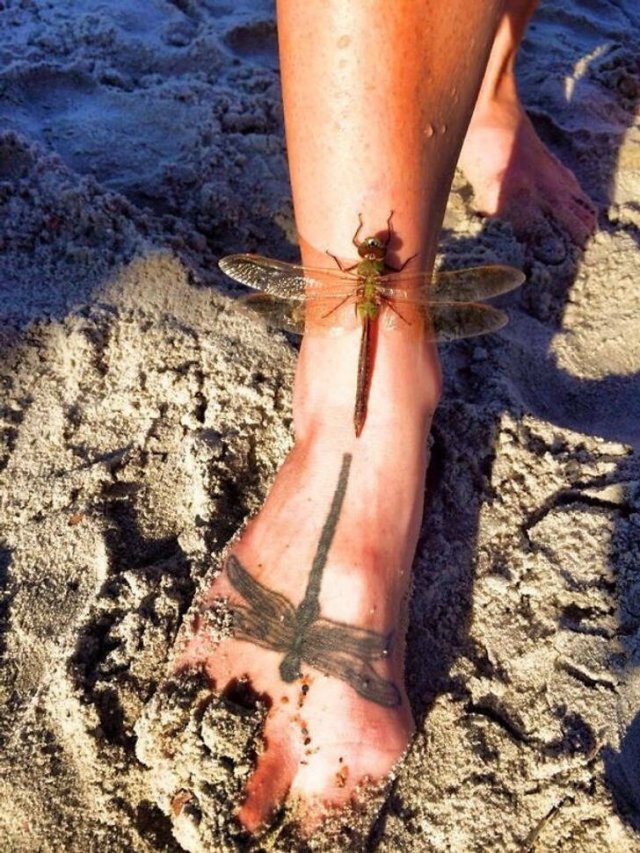Log in
Statistics
We have 476 registered usersThe newest registered user is Yui_fan
Our users have posted a total of 45421 messages in 6657 subjects
THAT’S ENTERTAINMENT
CLICK ON ANY OF THESE LINKS TO FIND OUR EXTREME ENTERTAINMENT
UPDATED :
71 WGT TUTORIALS & 32 YOUNG46 TUTORIALS
CLICK HERE TO SEE OVER 100 YOUTUBE VIDEO TUTORIALS . FROM WGTers , WGT & YOUNG46 FORUM UPDATE
TO THE MANY WELCOME GUESTS . THIS FORUM IS NO LONGER A COUNTRY CLUB WEBSITE FOR A WGT COUNTRY CLUB . PLEASE FEEL FREE TO READ THE FORUMS.
THERE ARE MANY TOPICS OF INTEREST . OR NOT . THIS WEBSITE IS AN INFORMATION AND ENTERTAINMENT WEBSITE ONLY .
MUCH OF THE CONTENT IS ARCHIVES OF PURPOSES PAST .
THERE ARE SOME MORE CURRENT TOPICS .
REGISTRATION IS NOT NECESSARY TO READ THROUGHOUT .
REGISTRATION IS EASY AND FREE . THIS IS AN AD FREE WEBSITE . NOTHING IS EVER REQUESTED FROM REGISTERED MEMBERS .
REGISTRATION ENABLES COMMENTING ON TOPICS . POSTING NEW TOPICS . FULL ACCESS TO THE WEBSITE IMAGE HOST . WHICH IS A VERY COMPLETE AND CONVENIENT TOOL .
PLEASE ENJOY .
TIER & AVERAGE REQUIREMENTS
BASIC LEVEL AND AVERAGE REQUIREMENTS , AND SATURATION

WHILE YOUR HERE
WHILE YOUR HERE :
CHECK OUT THE INCREDIBLE PHOTOGRAPHY IN
MY SERIES
THIS USED TO BE THE HOME OF OUR WORLD CLOCK . WHICH CAN NOW BE FOUND IN ITS OWN FORUM ON THE MAIN PAGE ..
THERE ARE MORE WORLD CLOCKS INSIDE HERE .
WORLD CLOCK
FB Like
Lynx......
Page 1 of 1
 Lynx......
Lynx......

[size=14]A Northern lynx (Lynx lynx) at the Lisbon Zoo.
PHOTOGRAPH BY JOEL SARTORE, NATIONAL GEOGRAPHIC, PHOTO ARK
[/size]
Lynx
[size=12]COMMON NAME: Lynx
SCIENTIFIC NAME: Lynx
TYPE: Mammals
DIET: Carnivore
SIZE: 32 to 47 inches long
WEIGHT: 22 to 44 pounds
SIZE RELATIVE TO A 6-FOOT HUMAN:


[/size]
What is a lynx?
Lynxes are medium-size, solitary wildcats that roam the forests of North America, Europe, and Asia. While their name comes from a Greek word meaning “to shine”—because of their reflective eyes—their defining features are the prominent tufts of hair above their ears, and their short, stubby tails.
There are four species of lynx. The Eurasian and Iberian lynx are found in Western Europe and Central Asia, and were once thought to be the same species despite the smaller size of the Iberian lynx. The other two species—Canada lynx and bobcats—live in North America. Bobcats, or Lynx rufus, got their name from their short—or bobbed—tail. But even experts can sometimes struggle to tell them apart from the other species.
Appearance
Lynx are usually a light brown, red, rusty, or gray color with dark spots for camouflage. Their fur grows thicker in winter to keep them warm in cold climates.
They are recognizable by the pointed black tufts of hair at the ends of their ears, beard-like fur around their cheeks, long legs, and short, stubby tails with a black tip. Their tufted ears may function like antennae to help them hear, detect movement above their head, or simply to keep their ears warm—but scientists have yet to discover the exact reason.
(Read about an all-black Canada lynx seen for the first time ever.)
Lynx bodies are adapted for life in deep snow. Their long legs help them move through the thick powder and their large, webbed paws have hair underneath to keep them warm and stop them slipping. Those paws hit the ground with a spreading toe motion to help the animal walk on top of the snow, forming the perfect snowshoe.
Bobcats, however, don’t need to travel through thick snow in search of snowshoe hares, so they have smaller feet without hairy soles. You can also tell the bobcat by the smaller tufts on its ears, and the white underside of its tail.
Diet and population
Lynx are skilled hunters due to their great hearing and eyesight so strong that they can spot a mouse 250 feet away.
They tend to live in dense forests where there is plenty of cover to ambush their prey. Lynx aren’t able to keep up the chase over long distances so once they’ve spotted their prey they’ll silently stalk it until the perfect moment. Pouncing, they grasp their victim with their front claws and kill it with a bite to the throat.
These stealthy cats avoid humans and hunt at night, so they are rarely seen. They usually target one primary prey. For Canada lynx, that’s the snowshoe hare and for the Iberian lynx, it’s the European rabbit. Meanwhile, bobcats have a more varied diet of rabbits, hares, rodents, and sometimes birds, while the larger Eurasian lynx hunts deer and other small animals.
(Lynx take epic 2,000-mile treks—but why is a mystery.)
Lynx have also been known to kill farm animals, such as sheep and goats, particularly when the livestock is left to graze near the edge of a forest. In Norway, the government compensates farmers for the 10,000 or so sheep that are lost to lynx each year.
Reproduction
Lynx are largely solitary animals that make dens under fallen trees, in dense vegetation, or in abandoned burrows.
During mating season—which takes place at the end of the winter or in early spring—females will only breed with one male. Rival males will screech at each other as they fight over the female. About two months after mating, females give birth to a litter of between one and four kittens that she will raise herself with no involvement from the male.
(Out of the shadows, these are the wildcats you've never seen.)
By using camera traps and tagging kittens, researchers have learned that young lynx become independent at 10 months of age and head out to find their own territories after 20 months. Females have smaller territories than males and don’t stray as far from home, and there are some reports of mother-daughter pairs hunting together. Once a young lynx has established its own territory, it is ready to reproduce.
Threats to survival
The International Union for Conservation of Nature classifies the Iberian lynx as endangered, while the Eurasian and Canada lynx and the bobcat are classified as of least concern. They are threatened by the loss and fragmentation of their habitats, humans who trap them for their valuable fur, and issues affecting their prey, such as disease and climate change.
Conservation and reintroduction efforts have proven successful in reversing the decline of the species. For example, the Eurasian lynx has been successfully reintroduced across Europe in countries including France, Italy, Austria, Germany, and Switzerland. Meanwhile, the population of Iberian lynx has grown tenfold across Spain and Portugal.
(Here's how the Iberian lynx became the biggest comeback in cat conservation.)
However, these are not without their challenges. The reintroduction of three pairs of Eurasian lynx to Croatia in 1973, 70 years after the last native animal was lost, seemed successful at first. But the population suffered from inbreeding, and there are now new projects aiming to add genetic diversity into the population by introducing new members.
DID YOU KNOW?
An all-black Canada lynx was recorded for the first time in August 2020.
— National Geographic
Lynx are crepuscular: they sleep through the day and are active at dawn and dusk.
— Woodland Trust
The Iberian lynx was once the most endangered cat on the planet. But thanks to conservation efforts it has been reclassified from critically endangered to endangered, with at least 1,100 animals scattered across Spain and Portugal.
— National Geographic
Lynx went extinct in the United Kingdom around 200 A.D. but some have suggested reintroducing the species in Scotland to help manage booming deer populations.
— Scottish Wildlife Trust
Instead of meowing like a house cat, bobcats make chirruping sounds like a bird.
— Smithsonian's National Zoo & Conservation Biology Institute
Page 1 of 1
Permissions in this forum:
You cannot reply to topics in this forum
 Events
Events















































































» YOUTUBE SHORTS * AGT...2 *
» YOUTUBE SHORTS respect only...6
» YOUTUBE SHORTS OFF THE WALL...22
» YOUTUBE SHORTS SPORTS ONLY...7
» LET's GO SHORTS & GIF's...7
» YOUTUBE SHORTS WWE...22
» ASIAN HOTTIES
» YOUTUBE SHORTS ANIMALS ONLY...4
» HEY JOE * MUSIC COMPILATION OF WILD SHIT *
» Unbelievable Dashcam Captures: Crazy Moments on the Road Compilation!
» YOU TUBE SHORTS MUSICIANS ONLY...10
» Best of Becky Lynch full match marathon
» MEMEBODIA...3
» GIRL ATHELETES VIDS PICS GIFS COMPILATION...13